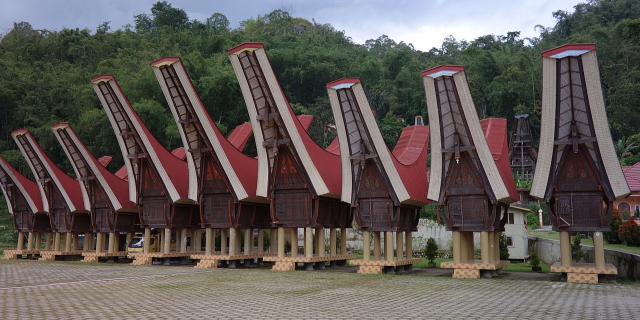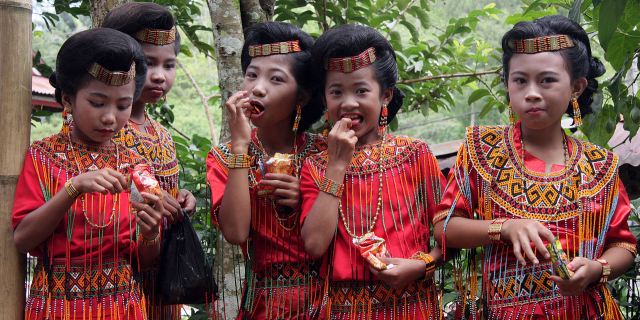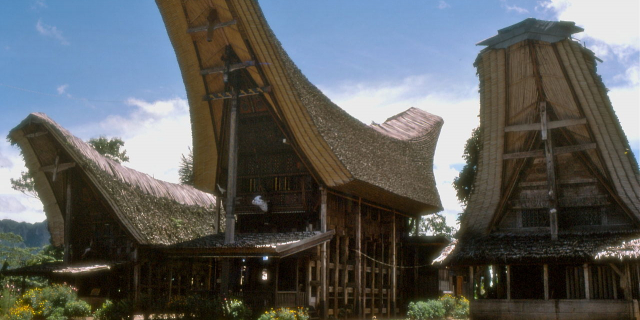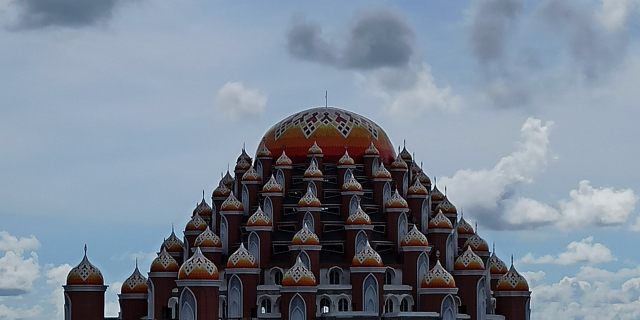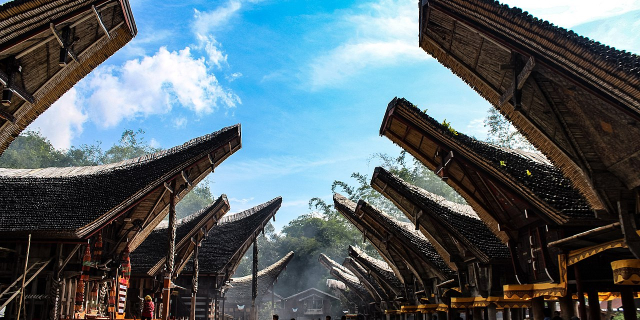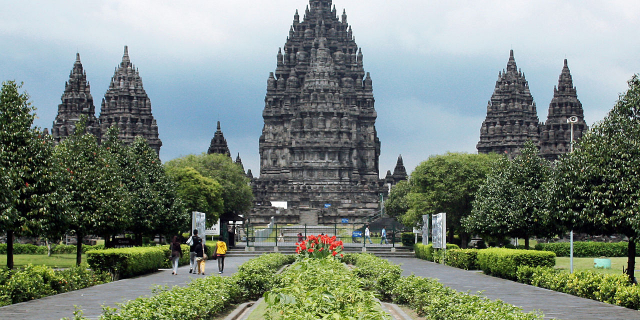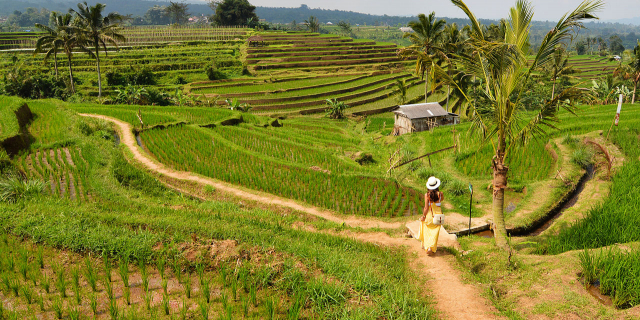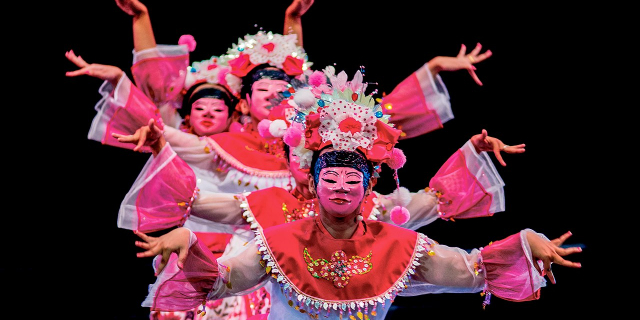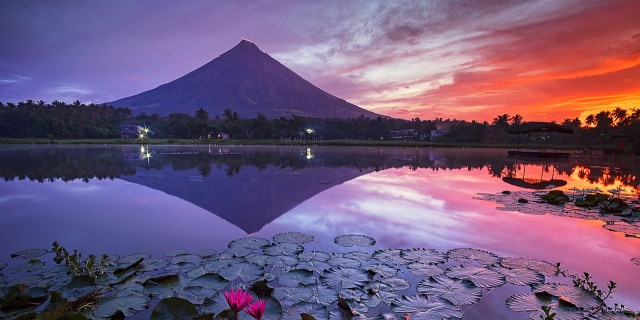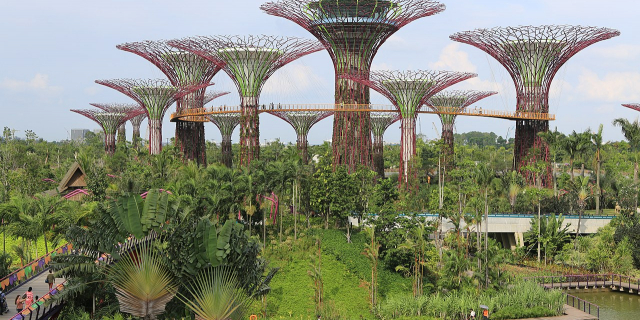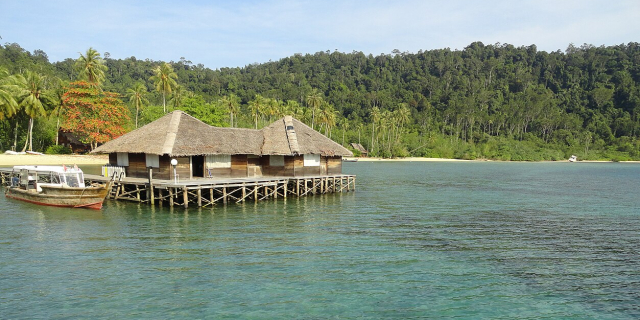South Sulawesi
Context of South Sulawesi
South Sulawesi (Indonesian: Sulawesi Selatan) is a province in the southern peninsula of Sulawesi. The Selayar Islands archipelago to the south of Sulawesi is also part of the province. The capital is Makassar. The province is bordered by Central Sulawesi and West Sulawesi to the north, the Gulf of Bone and Southeast Sulawesi to the east, Makassar Strait to the west, and Flores Sea to the south.
The 2010 census estimated the population as 8,032,551 which makes South Sulawesi the most populous province on the island (46% of the population of Sulawesi is in South Sulawesi), and the sixth most populous province in Indonesia. At the 2020 Census this had risen to 9,073,509, and the official estimate as at mid 2021 was 9,225,747. The main ethnic groups in South Sulawesi are the Buginese, Makassarese, Toraja, and Mandar. The economy of the province is based on agriculture, fishing, and mining of gold, magnesium, iron and other metals. The pinisi, a traditiona...Read more
South Sulawesi (Indonesian: Sulawesi Selatan) is a province in the southern peninsula of Sulawesi. The Selayar Islands archipelago to the south of Sulawesi is also part of the province. The capital is Makassar. The province is bordered by Central Sulawesi and West Sulawesi to the north, the Gulf of Bone and Southeast Sulawesi to the east, Makassar Strait to the west, and Flores Sea to the south.
The 2010 census estimated the population as 8,032,551 which makes South Sulawesi the most populous province on the island (46% of the population of Sulawesi is in South Sulawesi), and the sixth most populous province in Indonesia. At the 2020 Census this had risen to 9,073,509, and the official estimate as at mid 2021 was 9,225,747. The main ethnic groups in South Sulawesi are the Buginese, Makassarese, Toraja, and Mandar. The economy of the province is based on agriculture, fishing, and mining of gold, magnesium, iron and other metals. The pinisi, a traditional Indonesian two-masted sailing ship, is still used widely by the Buginese and Makassarese, mostly for inter-insular transportation, cargo, and fishing purposes within the Indonesian archipelago.
During the golden era of the spice trade, from the 15th to 19th centuries, South Sulawesi served as the gateway to the Maluku Islands. There were a number of small kingdoms, including two prominent ones, the Kingdom of Gowa near Makassar and the Bugis kingdom located in Bone. The Dutch East India Company (VOC) began operating in the region in the 17th century. VOC later allied with the Bugis prince, Arung Palakka, and they defeated the kingdom of Gowa. The king of Gowa, Sultan Hasanuddin was forced to sign a treaty which greatly reduced the power of Bungaya Gowa.
More about South Sulawesi
- Population 9073509
- Area 46717
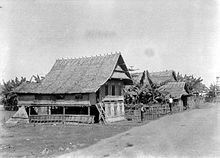 A village in South Sulawesi 1929
A village in South Sulawesi 1929 Celebes Map 1905
Celebes Map 1905Sulawesi was first inhabited by humans around 30,000 years ago. The archaeological remains of the earliest inhabitants were discovered in caves near limestone hills around Maros, about 30 km northeast of Makassar. Pebble and flake stone tools have been collected from the river terraces in the valley of Walanae, among Soppeng and Sengkang, including the bones from giant pig and elephant species that are now extinct. Hand print paintings, estimated to be around 35,000 to 40,000 years old, have been found in the Pettakere cave,[1] located 12 kilometres (7.5 mi) from the town of Maros and 30 kilometres (19 mi) from Makassar.[2]
...Read moreRead less A village in South Sulawesi 1929
A village in South Sulawesi 1929 Celebes Map 1905
Celebes Map 1905Sulawesi was first inhabited by humans around 30,000 years ago. The archaeological remains of the earliest inhabitants were discovered in caves near limestone hills around Maros, about 30 km northeast of Makassar. Pebble and flake stone tools have been collected from the river terraces in the valley of Walanae, among Soppeng and Sengkang, including the bones from giant pig and elephant species that are now extinct. Hand print paintings, estimated to be around 35,000 to 40,000 years old, have been found in the Pettakere cave,[1] located 12 kilometres (7.5 mi) from the town of Maros and 30 kilometres (19 mi) from Makassar.[2]
Increase in commerce due to the rise of external demand for South Sulawesi rice encouraged major agricultural expansion and political centralization in the early 14th century.[3][4] Swidden agriculture was increasingly replaced with intensive wet rice cultivation, leading to a rise in population density. New settlements were founded in the interior part of the peninsula as pristine forests were cleared.[5] These changes accompanied the rise of new interior agricultural polities, such as the Bugis chiefdoms of Boné and Wajoq,[5] as well as the Makassar polity of Gowa.[6]
By the early 16th century, Boné had assumed a paramount position in the eastern part of the peninsula,[7][8] while the Makassar twin kingdoms of Gowa and Talloq started to expand their influence throughout the western part.[9] Their competition for hegemony over South Sulawesi caused Gowa-Talloq and Boné to clash in the 1560s.[10][11]
In 1582, Boné, Soppéng, and Wajoq signed a mutual defense pact known as the Treaty of Timurung.[12] The alliance, also referred to as the Tellumpocco ("Three Powers", lit. "Three Peaks"), sought to stop Gowa's expansionism and to reclaim the autonomy of the Bugis polities under Gowa's vassalage.[13][14] Gowa's campaigns against the alliance in 1582, 1585, and 1588 were all successfully repulsed, with another one in 1590 abandoned following the death of Gowa's ruler.[15] By the early 17th century, however, Gowa and Talloq had become the dominant powers in South Sulawesi as they supported international commerce and embracing Islam. Gowa waged successful campaigns against the Bugis kingdoms, defeating Soppéng in 1609, Wajoq in 1610, and Boné in 1611.[16][17]
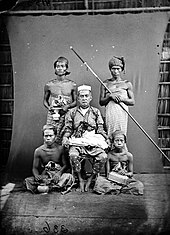 Regent of Maros, Makassar, Sulawesi
Regent of Maros, Makassar, SulawesiThe Dutch East India Company (VOC) began operating in the region in the 17th century and saw the Kingdom of Gowa as an obstacle for its desire to control of the spice trade in this area. VOC later allied with the Bugis prince, Arung Palakka, who was living in exile after the fall of the Bugis. After a year-long battle, they defeated the kingdom of Gowa. And the king of Gowa, Sultan Hasanuddin was forced to sign a treaty greatly reducing the power of Bungaya Gowa. Furthermore, Palakka became ruler in South Sulawesi.
A Bugis queen later emerged to lead the resistance against the Dutch, who were busy dealing with the Napoleonic Wars in Europe, but after the end of the Napoleonic Wars, the Dutch returned to South Sulawesi and eradicated the queen's rebellion. But resistance of the Bugis people against colonial rule continued until 1905. In 1905, the Dutch also managed to conquer Tana Toraja.
 Mangi Mangi Karaeng Bontonompo, king of Gowa, with the public and some dignitaries during the installation of acting governor of Celebes and dependencies, Mr. Bosselaar, 1937
Mangi Mangi Karaeng Bontonompo, king of Gowa, with the public and some dignitaries during the installation of acting governor of Celebes and dependencies, Mr. Bosselaar, 1937Before the proclamation of the Republic of Indonesia, South Sulawesi consisted of a number of independent kingdoms' territory and was inhabited by four ethnic groups namely the Bugis, Makassar, Mandar, and Toraja.
On June 16, 2022, a tornado struck in the province, damaging 63 homes. One man died of a stress-induced medical issue during the tornado, but was not a direct tornado-related fatality.[18]
^ Domínguez, Gabriel (9 October 2014). "Indonesian cave paintings 'revolutionized our idea of human art'". Deutsche Welle. Retrieved 22 November 2014. ^ Volkman, Toby Alice (1990). Sulawesi: Island crossroads of Indonesia. Passport Books. ISBN 9780844299068. Retrieved 22 November 2014. ^ Druce 2009, pp. 34–36. ^ Pelras 1996, pp. 100–103. ^ a b Pelras 1996, pp. 98–100. ^ Bulbeck 1993, p. 13. ^ Andaya 1981, p. 22. ^ Pelras 1996, p. 114. ^ Andaya 1981, p. 24. ^ Pelras 1996, pp. 116, 131–132. ^ Andaya 1981, p. 30. ^ Pelras 1996, pp. 132–133. ^ Andaya 1981, pp. 30–31. ^ Druce 2009, p. 249. ^ Andaya 1981, p. 31. ^ Andaya 1981, p. 33. ^ Pelras 1996, pp. 136–137. ^ "Maros whirlwind: BPBD readies evacuation site for affected residents". Antara (news agency). Retrieved 18 June 2022.






